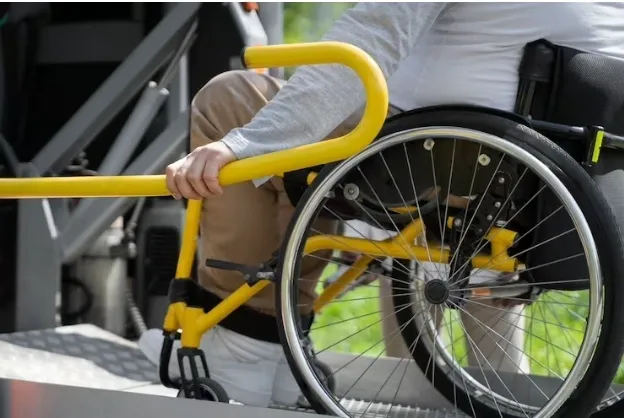What is Gurney Transportation?
Gurney transportation is a specialized form of medical transportation that uses a stretcher, known as a gurney, to transport patients. The gurney is designed to support patients comfortably and securely, providing a stable and safe mode of transportation. It is typically required for individuals who cannot sit upright or use a wheelchair, may be bed bound, or require minimal movement due to medical necessity such as post operation.
Non-emergency medical gurney transportation is a crucial service that ensures patients can access the care they need. For patients with mobility or health issues, traditional medical transportation methods can be uncomfortable and stressful. However, gurney transportation is a solution that improves patient experience during medical transport transport.
Comfortable and Secure
The gurney is designed to support patients comfortably and securely, providing a stable and safe mode of transportation. The gurney is equipped with adjustable features, such as headrests and armrests, that allow patients to be positioned in a comfortable and secure manner. Patients can also be secured using straps or restraints to prevent any unnecessary movement during transportation.
Gurney transportation is especially beneficial for patients who are unable to sit upright in a traditional wheelchair or need to lie down during transportation. Patients who are in critical condition or require intensive medical care during transport can also benefit from gurney transportation. The gurney can be equipped with medical equipment, such as oxygen tanks or heart monitors, to ensure patients receive the care they need during transport.
Efficient and Timely
Gurney transportation is an efficient and timely way to transport patients. The gurney is equipped with wheels that allow for smooth and easy movement, and trained medical professionals can quickly and safely load and unload patients from the gurney. The gurney can also fit easily into various types of vehicles, including ambulances, vans, and helicopters, which enables quick and efficient transportation to medical facilities.
Gurney transportation can also save time and resources for medical facilities. Hospitals and medical facilities that offer gurney transportation can reduce the amount of time patients spend waiting for transportation, leading to more efficient use of hospital resources and reduced costs.
Reduced Stress
Traditional transportation methods can be stressful for patients, particularly those with mobility or health issues. Gurney transportation reduces this stress by providing a stable and comfortable mode of transportation. Patients can relax and feel secure during transport, which can reduce anxiety and stress.
Improved Safety
Gurney transportation is designed to be safe and secure, reducing the risk of injury or accidents during transport. The gurney is equipped with features that prevent patients from falling or sliding during transport. Trained professionals are always present to monitor patients and provide any necessary care. Gurney transportation also reduces the risk of injury to medical professionals who may have to lift and move patients during transportation.
Why Choose Care 22 for Gurney Transportation?
Care 22 is fully equipped with modern electric gurneys or stretchers including locks and features that allow for smooth handling and support ease of mobility and transfer. We offer a comfortable and secure mode of transportation, efficient and timely transport, reduced stress, and improved safety. Gurney transportation is an excellent option for patients who require intensive medical care or cannot sit upright during transportation. As medical transportation continues to evolve, gurney transportation will play a critical role in improving patient care.
Gurney transportation can be customized to meet the specific needs of patients. For example, patients who require bariatric care can be transported using a bariatric gurney, which is designed to support patients who weigh more than 250 pounds. Gurney transportation can also be adapted for patients with specific medical conditions, such as patients with spinal cord injuries or other mobility impairments.
Gurney transportation is a game-changer for medical transportation. It will undoubtedly continue to play a critical role in improving patient care. Patients can rest easy knowing that they have access to safe, secure, and comfortable transportation to and from medical facilities.






